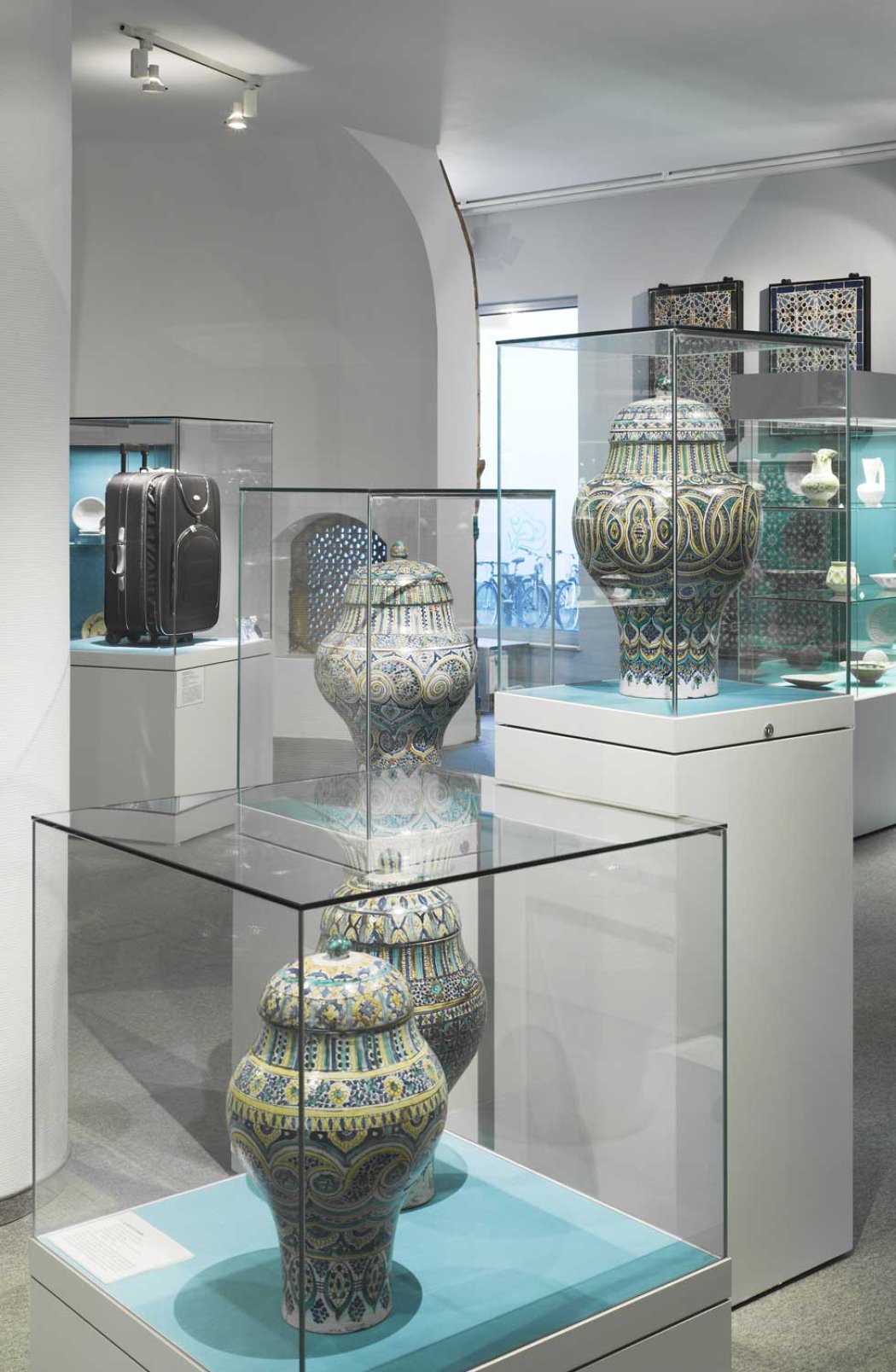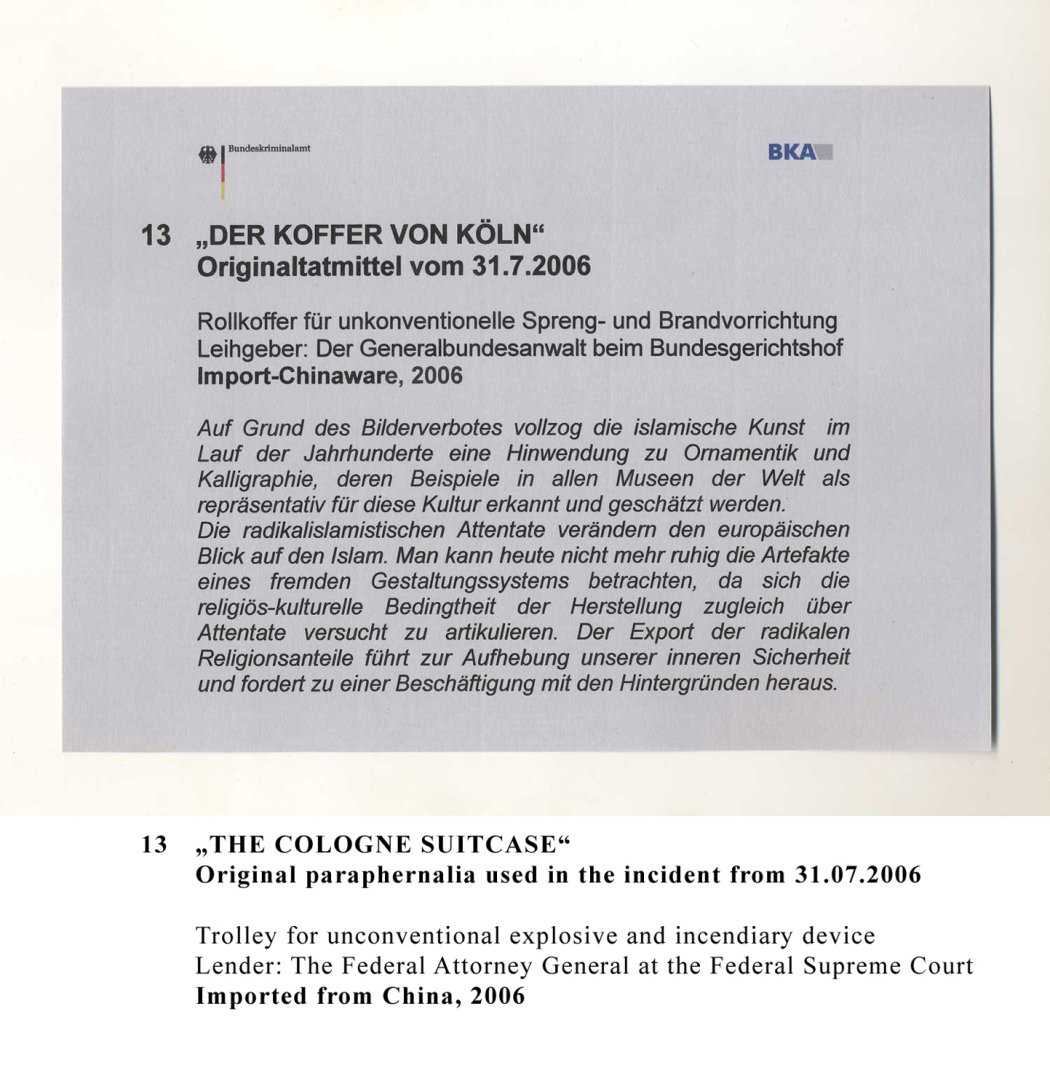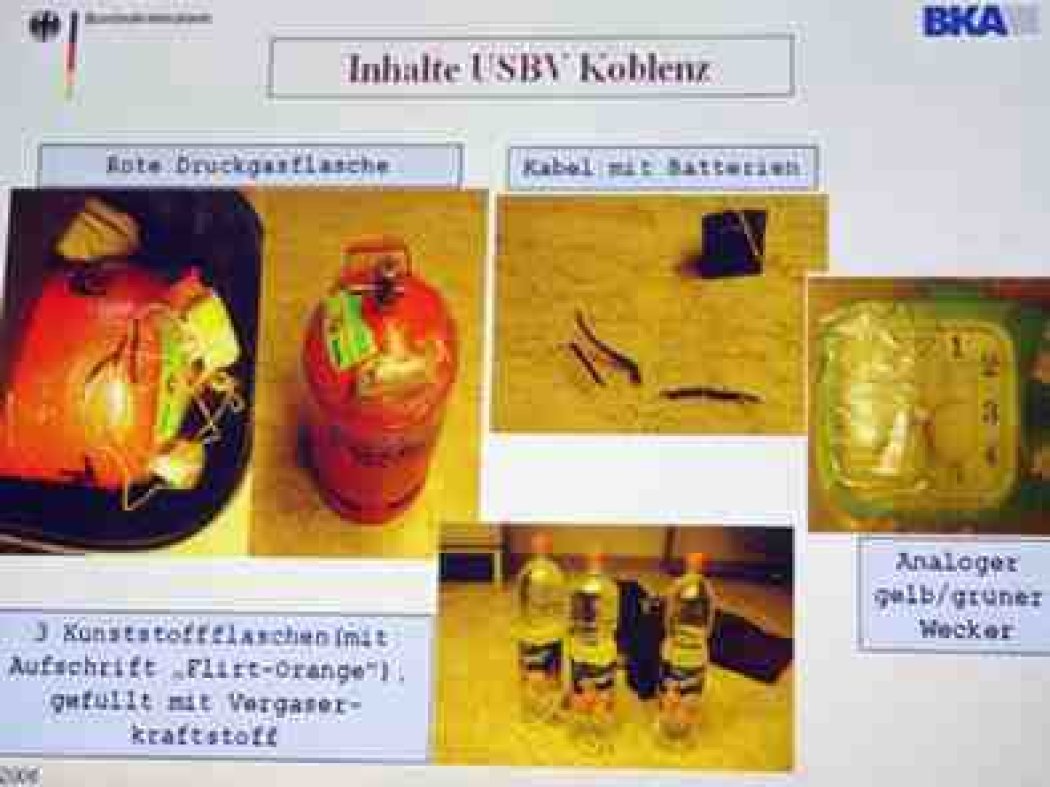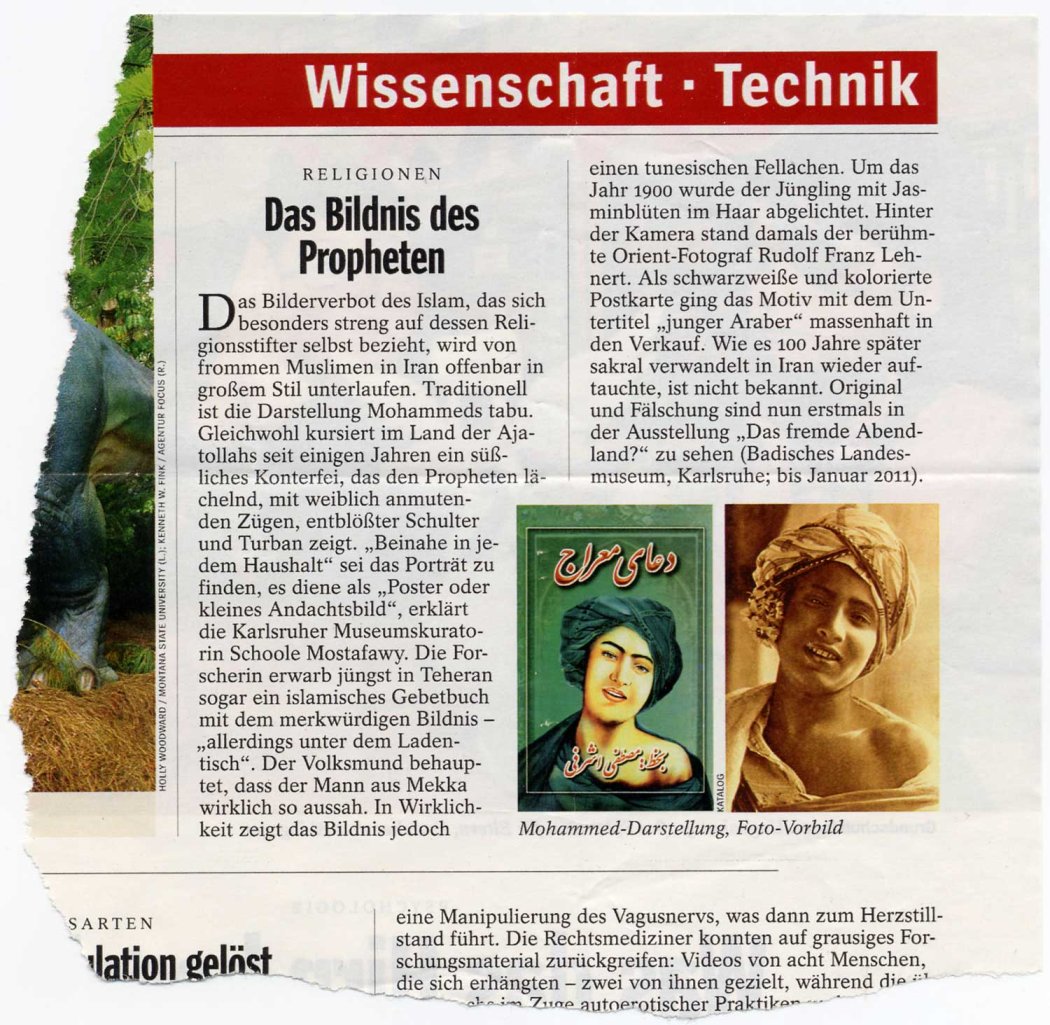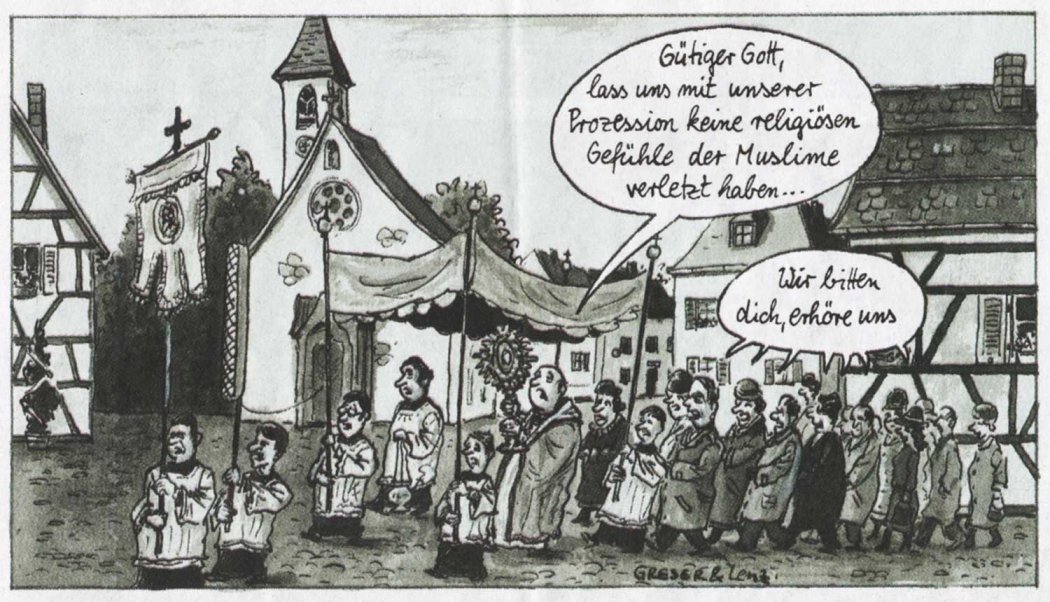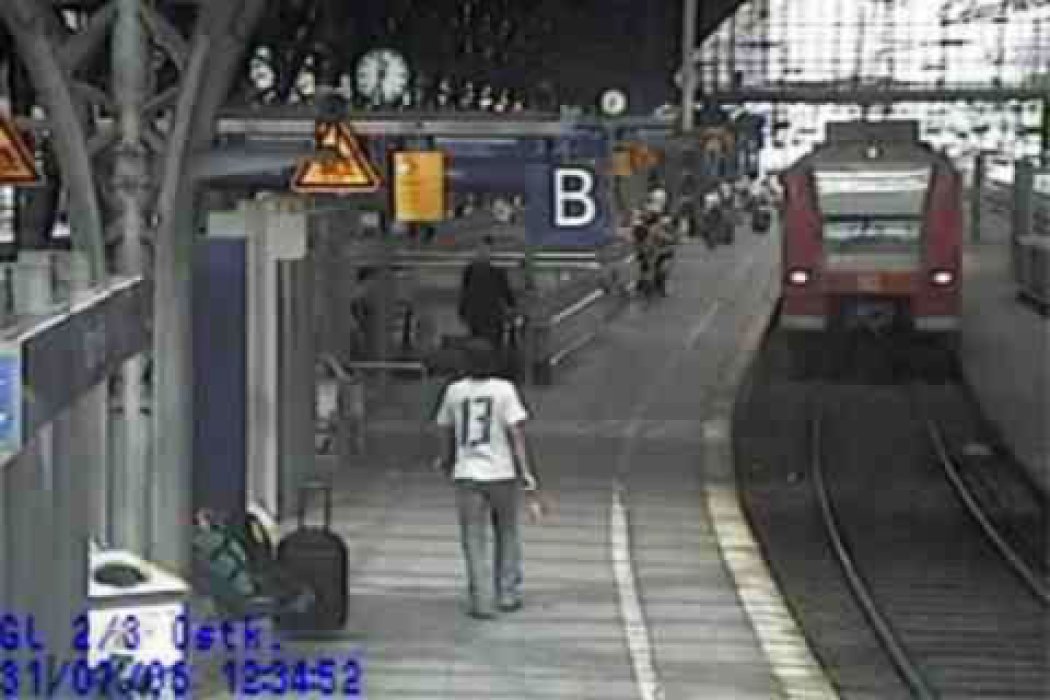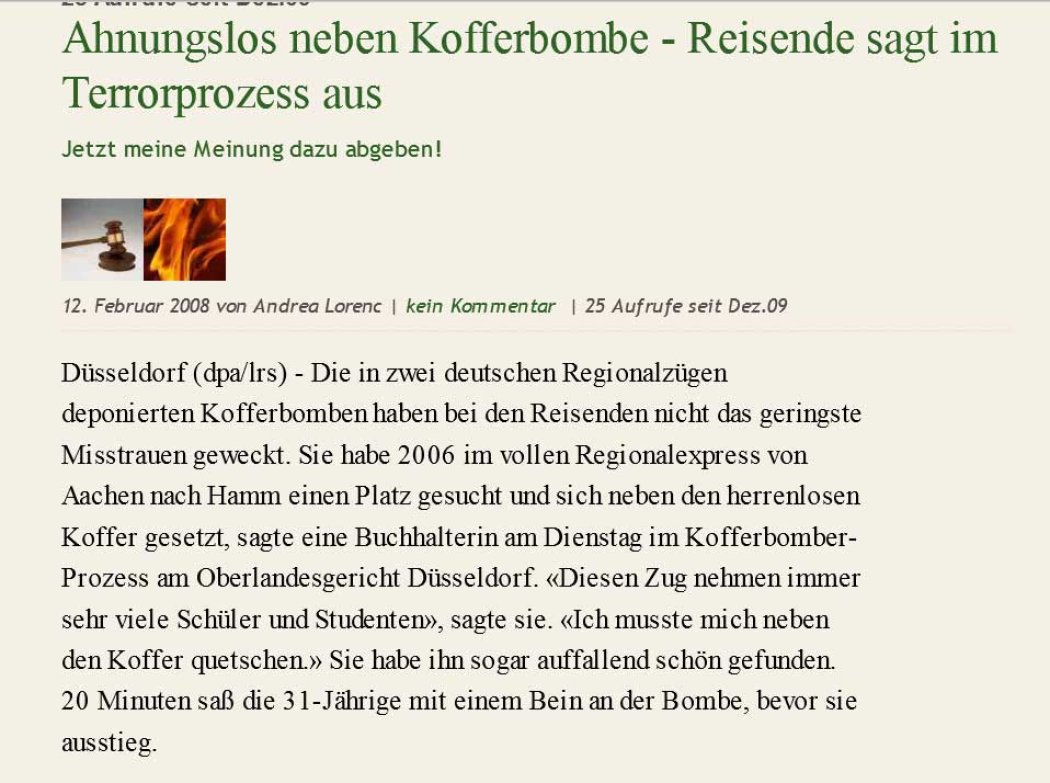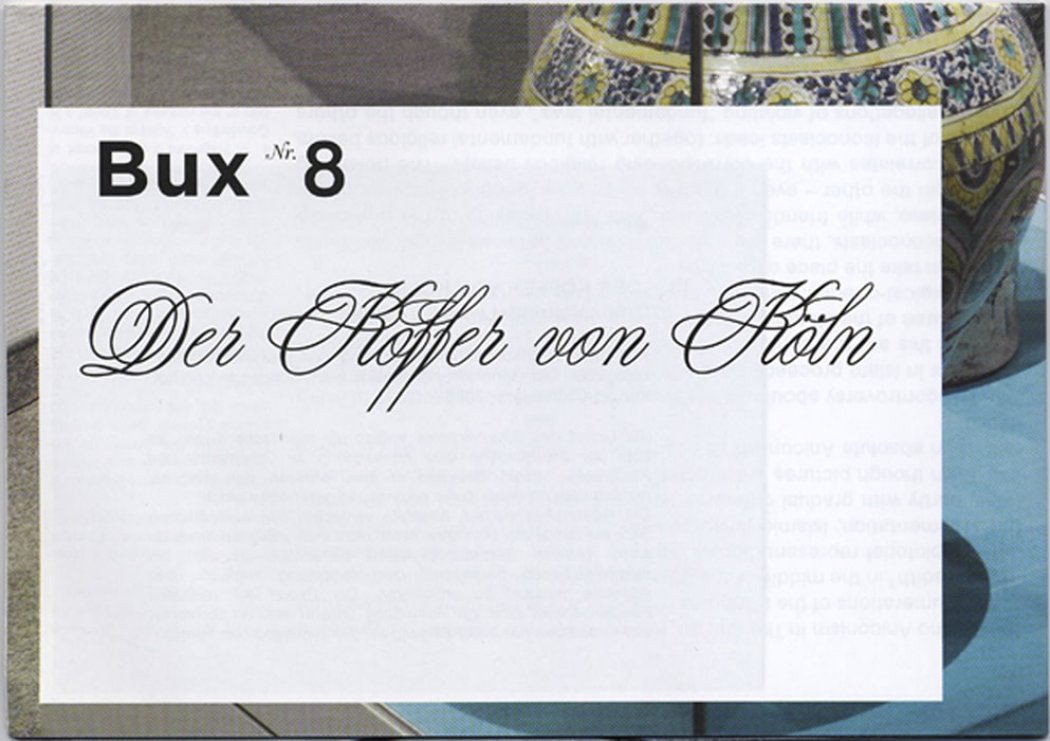When Islam is thought of in Europe today, thoughts of terrorist violence prevail – not culture and art as in the past. Yet if the European conception of Islam has changed, museums would also have to expand their collections to include current references.
Local museums house multiple collections of objects from Islamic countries that were often created many centuries ago. These artefacts undoubtedly document craftsmanship, origin, a language of forms, etc., but they also depict our own European desires and images of the past regarding a foreign world. For it was this very perception that determined the museum selection – placing, among other things, a distinct emphasis on ornamentation. What we considered interesting is only part of a reality which was not transported along with it – a reality which, precisely because it was absent, charged the objects of the collection with infinite exoticism in their ‘magical faraway’ appeal.
The past decades have changed the European view of Islam considerably. All form of exoticism has vanished. It is no longer possible today to separate these works of art of a foreign school of artistic thought from the fact that the religious-cultural conditionality of their creation (prohibition of images) also seeks to articulate itself through assassinations. It has equally become impossible to keep away or separate foreign conditions of existence from what ‘fits’ here. Muslims live next door. The artefacts in the museums are fragments of Islamic culture, now completed by the lives of immigrants.
The project ‘Suitcase of Cologne’ addresses the European view of Islam and a transformed perception of the foreign which in turn transforms us; it is not about Islam itself.
Project realisation: An ornate vase from the 9th century, which was discovered in Iraq, made room in its display case for the suitcase bomb of the attempted attack in Cologne.
Background
I
‘The writing with the “uncreated” word of God revealed to Mohammed in the Koran left no place for images in the religious space.’1 However, there is no prohibition of images in the Koran. In the 7th century, even sculptures were set up in the Kaaba until Mohammed removed them.2 Only in the literary records of the Hadith, completed in the middle of the 8th century, can written evidence of this be found.3 Since then and with these records as a basis for argumentation, Islamic jurisprudence has been making legally binding statements on pictorial representations, in part with subtle differences between three- and two-dimensional versions. The prohibitions primarily refer to a portrayal of living beings. Although, in a sacred context, the images have been replaced by writing or by signs, there can be no question of an absolute ban on images in Islamic history. This is supported by many examples of Islamic art from over the centuries or even by the living rooms of Muslims today, where pictures hang on the walls and can also be seen on television. In addition, the Muslim community is not as closed off and restricted as Europe think. There are different schools of law, mystical and rational, which exist side by side even within various main currents and tendencies.
In the 18th century, the Salafist and religious scholar Wahab criticised art as dangerous and blasphemous, among other things, thus successfully laying the foundation with his teachings for contemporary, radical and also Europe-hostile interpretations of the Koran. Those, for instance, who, with their terrorist attacks, fight for a return of the 7th century orient themselves around such Salafist teachings. At the same time, they threaten Muslims who do not wish to share this radicalisation.4
The prohibition of images is based on the widespread belief in the correlation of an image with what it depicts – a pre-Islamic tradition which, already in antiquity, marked a cultural boundary still prevalent there today. It is regarded as God’s privilege to create life, and, since both image and what is shown are equated, human effigies are considered blasphemy.5 In keeping with this, the Islamic God has always remained invisible, while the Jewish God was given a face through Christ.6 ‘He who has seen me has seen the Father’ (John 14: 9). And: ‘He (Jesus) is the image of the invisible God’ (Colossians 1: 15). There were also iconoclastic aspirations in Christianity, above all, in Byzantine rural regions close to the cultural area where the Islamic prohibition of images also emerged.7
For those who abhor images, there are only two relationships between things – being the same or being different – while for those who adore images, a partial nature of the one in the other is possible, even if an essential identity does not exist. These views of the image correlate with analogous religious views.8 If the polarising fundamental attitude of iconoclasm is combined with fundamentalist religious interpretations, those who deviate from it are presumed to violate ‘fundamental laws’ with pictures. Other traditions do not accept these radical prosecutors. This explains why the worldwide protests against the 12 Mohammed caricatures, which were published by the Danish daily newspaper Jyllands-Posten on 30 September 2005, were justified on the basis of a violation of the Islamic prohibition of images – alongside the offensive degradation of the Prophet by depicting Mohammed as a terrorist. Muslims worldwide naturally claimed the validity of this prohibition for Denmark.
II
From the Crusades to the siege of Vienna in 1683, Islam provided Europe with an image of the enemy. During the widespread exotic discoveries of the world in the 18th century, a reorientation took place by conveying both alternative and positive images of Islamic society – together with the systematic collection and research of artefacts and traditions from Islamic-influenced cultures. What is particularly valued as reprentative was, and still is, the turn to ornamentation and calligraphy. The works and objects always had an innately precious allure. Overall, however, knowledge of the rules and doctrines of everyday Islamic life was rather general. The reproach of other pictorial concepts – such as the ban on pictures – did not have to be thematised as a conflict; and profound differences in values were able to remain unresolved, since there was rarely enough contact between the two cultures to necessitate agreement. After all, collections only incorporated those objects that represented their own ideas and which kept the distant at bay by emphasising their foreignness. Persian letters, magic flute, Lawrence of Arabia, Kara Ben Nemsi – one could get an idea of them, but keep reality away.
III
In order to feel threatened, one must be prepared; one must grant power to the threatening.9 Here, the new feeling of threat is combined with a reverberant emotional heritage of the two-thousand-year conflict between East and West. It’s as if everyone is waiting for long-forgotten keywords – as if all were ‘sleeper cells’. Today, for example, there are people who regard the intake of refugees in Germany in 2015 as a compensation for the guilt and responsibility of the Crusades.
The abolition of one’s own ‘distance security’ forces us to investigate the root and origins of current events. The above clarification of iconoclasm and of the relationship between image and representation had to be detailed since the subject shows just how many millennia these irreconcilable differences have persisted in the same cultural spaces, and how central they are to the individual perception of an order that no other can permit. Indeed, such secondary questions seem to be the main causes of these conflicts. How is the world assembled in the mind?
A form must be created that precedes the reflection of content because only a few are prepared to do so. A rapprochement would subsequently mean abandoning the suppression of non-compliant content so that the backing of views would no longer be a condition. A simultaneous coexistence of different content must simply be accepted. This very content comprises complementary basic relationships that can only do justice to an object if they are applied mutually.10
-------
1 Hans Belting: Das echte Bild. Bildfragen als Glaubensfragen. Munich, 2005, p. 146.
2 The Meccan scholar Ata ibn Abi Rabah, who died in 736, had seen them himself: the figures of Mary and Jesus were not destroyed until 692, during the fire of the Ka’ba under the ‘counter caliph’ Abdallah ibn al-Zubayr. The Encyclopaedia of Islam (new edition), vol. 9, p. 889; after the city history of Mecca by al-Azraqī (died 865).
3 Hadith literature includes the written records of Mohammed’s statements (instructions, highlighting of actions worth imitating, recommendations, etc.) which are not contained in the Koran, such as the following: ‘On the day of resurrection, the one who makes an image will be required to breathe life into him. But he will not be able to do that.’ Cited in: Rudi Paret: ‘: ‘Die Entstehung des islamischen Bilderverbotes’, in: Kunst des Orients, XI 1/2, Wiesbaden, 1976–77, p. 162.
4 Radical Islamists turn non-believers into whom they want and punish those who renounce ‘true faith’ with death. This is the so-called Takfirism: only because someone has made a confession of faith, he is not yet a true believer (Takfiri). These views were formulated in the 13th century by Ibn Taymiyyah and taken up again in the 20th century. Muslims, too, can be declared unbelieving and practically excommunicated. Takfirism enabled the occupation of the great mosque in Mecca in 1979 (4,000 dead according to unofficial reports), excusing the uninvolved victims of attacks by al-Qaeda. If the killed person was good, they went to paradise. And if they were bad, they went to hell and one had got rid of him. Where is the problem?
5 Belting, p. 150.
6 Belting, p. 145.
7 In fragment 2 of Constantine V’s iconoclastic text ‘Against the worship of the images of Christ’, it is also postulated, for example, that a ‘true image’ must be identical with the object it represents. Cited after: Antirrhetici II of Nikephoros, in: Georg Ostrogorsky: Studien zur Geschichte des byzantinischen Bilderstreites, Wroclaw, 1929, p. 41
8 The enemies of the image tend to emphasize a divine unity, while those who support the image can integrate a hypostatic difference in their views, while simultaneously having an essential unity (e.g. the Holy Trinity).
9 In this context, it is worth recalling the media reports on the cancellation of the Berlin premiere of Mozart’s opera Idomeneo on 26 September 2006, which clearly documents the production of fear of a threat.
10 ‘The [...] principle of complementarity is a form of dealing subtly with contradiction: to contemplate the world, two complementary perspectives are simultaneously introduced, each of which can be unequivocally expressed in a clearly understandable language and both of which, separated from each other, are wrong. Their common presence creates a new situation that is uncomfortable for reason. But only with this conceptual discomfort will we succeed in arriving at a correct representation of the world.’ Michel Houellebecq: The creative absurdity in: Die Welt als Supermarkt, Hamburg, 2001, p. 35.
----
Bibliography
- Hans Belting: Das echte Bild, Munich, 2005
- Romuald Kamarkar: Hamburger Lektionen, FAZ, 16.9.2007
- G. Ostrogorsky: Studien zur Geschichte des byzantinischen Bilderstreites, Wroclaw, 1929
- p.V.: Der Koran, Leipzig, 1980
- Rudi Paret: Die Entstehung des islamischen Bilderverbotes in: Kunst des Orients. XI 1/2, Wiesbaden, 1976
- Claus Leggwie: Blasphemie muss sein in: FAZ, 13.2.09
- Volker Zastrow: Die Christenverfolgung in: FAZ, 13.4.08
- Ralph Giordano: Nicht die Muslime, der Islam ist das Problem in: FAZ, 12.8.2007
- han/dpa/ddp/AFP: Wir wollen Furcht einflößen in: Spiegel Online, 8.11.2006
- ddp, ptn. / pca. / Mü. / Frankfurter Allgemeine Zeitung: Kofferbomben von Terroristen gelegt in: FAZ, net, 9.1.2009
- Alfred Hackensberger: Lexikon der Islam-Irrtümer, Frankfurt, 2008
- Lawrence Wright: Der Tod wird euch finden, Munich 2007

